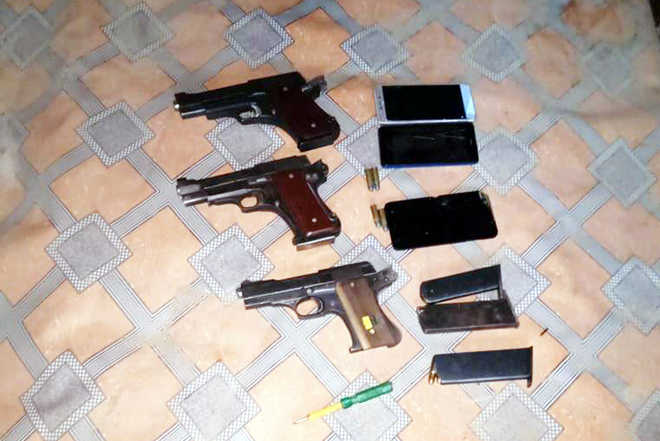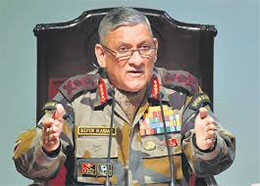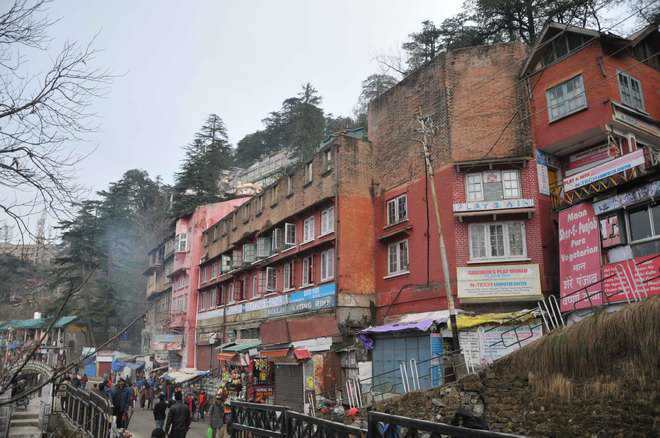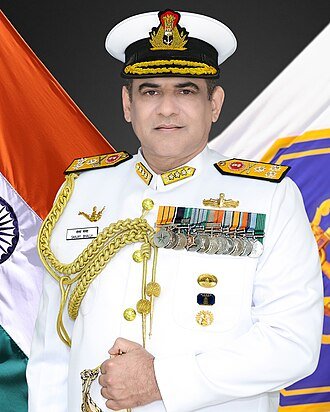







The principal bench of the Armed Forces Tribunal (AFT) at New Delhi has upheld the dismissal of a Group Captain of the Indian Air Force (IAF) for having extramarital relationship with the wife of a subordinate.
Dismissing the petition of ex-Group Capt JK Pandey on September 17, the bench of Justice Virender Singh (retd) and Lt Gen Sanjiv Chachra (retd), has said that the records amply indicate that the petitioner had an inappropriate relationship with the wife of an officer who was working under him in his unit. “Such a relationship, in the armed forces is taboo and against the ethos and norms of the sacred principles of camaraderie and soldiering. We do not wish to go any further on this subject, suffice to say that such a misdemeanour in the armed forces needs a quick and effective
retribution,” the bench said.
The case dates back to 2012 when the officer was posted as Commanding officer of 29 Equipment Depot (ED), IAF, Kanpur where he engaged in an extramarital relationship with one of his subordinate officer’s wife. He was subsequently posted to Air HQs, New Delhi, in March 2012 but he returned to Air Force Station Kanpur. And on April 14, 2012, a scuffle took place between him and the subordinate officer. Consequently, a Court of Inquiry was ordered by the Station Commander Air Force Station Chekeri (Kanpur).
The Court of Inquiry found the officer guilty of maintaining “inappropriate and illicit relationship” with the wife of a fellow officer and thereby “stealing affection of wife of a brother officer”. On finalization of the Court of Inquiry and pursuant to the order of the Chief of Air Staff (CAS,) a Show Cause Notice was issued to the officer as to why he should not be dismissed from the service under Section 19 of the Air Force Act. After considering the reply, the CAS opined that the retention of the officer was not in the interest of the service and recommended his dismissal to the central government. Based on these recommendations, the central government passed an order in June 2013, dismissing him from the Indian Air Force.
The officer had filed a petition in the AFT stating that the conduct of Court of Inquiry against him progressed with a pre-conceived mind and did not follow the procedures laid down under the regulations for the Air Force. He also alleged that the evidence of the most crucial witness, the complainant and his wife, was not recorded on video as was done for other witnesses.
The government counsel had rebutted the arguments of the petitioner by saying that there is enough evidence to support the findings of the Court of Inquiry and the applicant was counselled twice by the station Commander, Air Force Station, Kanpur, to stop/terminate the inappropriate relationship. Also the wife of the subordinate officer has also admitted in her own handwriting to the Station Commander about her emotional extramarital relationship with the applicant and also asked for forgiveness so that she could save her marriage and secure future of her children.
Dismissing the petition, the AFT bench observed that the government had given relief to the officer by granting him pensionary benefits in response to a mercy petition. “Even after being found blameworthy for such a grave misdemeanor adequately proven, the applicant should feel fully satisfied with the sympathetic consideration of the competent authority in their order granting him basic pension at Rs 31,784, commutation of Rs 16,45,204 and gratuity of Rs 9,00,000, which is equivalent to ninety per cent of the monetary/pensionary benefits given to a retired officer,” the bench observed.

Abohar, September 18
Five members of a gang were nabbed with the help of villagers when they drove into the Mahajan field firing range of the Army on the Sriganganagar-Bikaner highway on Monday.
The police said the gangsters had escaped on September 13 after firing at the house of another gangster Sukha near Sikar. They were planning to go to Sriganganagar, but in a haste drove into the Army’s field firing range. Realising their error, they reversed the car, which triggered suspicion. As an alarm was raised to intercept the car, villagers came out and assisted in nabbing the occupants. The car-borne gangsters have been identified as Mukesh and Hira Lal of Paproli, Anil of Katrathal, Shrawan Kumar of Bhairupura and Divesh Pareek of Sikar. Three unlicenced pistols, two magazines and some cartridges were seized.
Suratgarh DSP Lokender Dadarwal said a case under Sections 399 and 400 of the IPC and the Arms Act had been registered against them. Preliminary investigation indicated that they were allegedly involved in incidents of loot, burglaries, snatching besides attempt to murder. — OC

Pune, September 16
Chief of Army Staff General Bipin Rawat today said countries like Nepal and Bhutan “have to be inclined to India because of geography”. To a query on the growing closeness between Nepal and China, he said ties between nations change along with the global scenario.
Rawat was speaking on the sidelines of the closing ceremony of the Bay of Bengal Initiative for Multi-Sectoral Technical and Economic Cooperation-Field Training Military Exercise.
“Geography favours inclination towards India and as far as alliance (with China) is concerned, it is a temporary thing,” he added.Citing the example of Pakistan and the US, the General claimed that the dynamics of ties keep changing.
“We need not be bothered about all these issues. We need to concentrate on how to keep our country strong,” he said, adding that the leadership believed in developing ties with neighbours. “We are a bigger country and if we take the lead, everybody will follow suit. That is why we stepped into this (by organising the military exercise),” he said. — PTI

Pratibha Chauhan
Tribune News Service
Shimla, September 3
Fearing political backlash, the state government has revoked its decision to allow the purchase of land by non-Himachali employees and their children, which was being viewed as a dilution of Section 118 of the Tenancy and Land Reforms Act, 1972.
Sensing that the issue of making such a relaxation will open doors for many non-bona fide Himachalis to purchase land in the state, the Revenue Department had on September 1 issued a clarification to all three Divisional Commissioners and 12 Deputy Commissioners not to implement its earlier order of August 30, 2018.
“Considering the apprehension being expressed by the field staff of the Revenue Department and also other sections of society, the decision has been put on hold till further orders,” read the letter from Additional Chief Secretray (Revenue) to all DCs and Divisional Commissioners on September 1, 2018.
In its earlier decision, the Revenue Department had stated that the condition of having served for minimum 30 years in Himachal would also not be required for buying land. The relaxation also covered the wards of such officers, whether they were living in Himachal or outside. Any outsider is prohibited from buying land in Himachal under Section 118 of the Tenancy and Land Reforms Act, 1972.
Those who have been living here for the past 30 years or more, but do not own agricultural land, can buy land only after obtaining prior permission. The decision had evoked criticism from most sections of society, including the employees. The social media was raging with debates on the negative fallout of the decision.
“An excellent way to circumvent Section 118 by babus to pave the way for purchasing land for themselves and their children” is how some reacted.
Chief Minister Jai Ram Thakur, on assuming power, had stressed the need for simplifying the cumbersome procedure for the purchase of land in Himachal by outsiders under Section 118. His argument was that it was necessary to facilitate investment in the industry, power and tourism sector.
However, the latest decision of the BJP regime was to benefit only government officials and their children, which was being termed as a move to benefit only a small section.
The clause of Section 118 was put in place in 1972 by the first Chief Minister of the state, Dr Yashwant Singh Parmar, to protect scarce land in Himachal from being purchased by outsiders, rendering farmers landless. Any relaxation in Section 118 is a contentious political issue. Each time, an effort is made by the government to make some relaxation, it draws ire of political opponents.
Order was issued on August 30
What the Act says
Any outsider is prohibited from buying land in Himachal under Section 118 of the Tenancy and Land Reforms Act, 1972. Those who have been living here for the past 30 years or more, but do not own agricultural land, can buy land only after obtaining prior permission.
A MiG-27 fighter jet of the Indian Air Force crashed in Jodhpur’s Dangiwas during a routine mission on Tuesday. The pilot ejected to safety at a farm at Jaleli-Faujdar village.
The Russian-made single-seater tactical strike fighter crashed within minutes of taking off from the Jodhpur airbase. The pilot was taken to a hospital in an IAF helicopter.
Eyewitnesses said that they saw two fighter jets flying together, but one of them suddenly took a turn towards the open field and crashed near Dangiwas village.
“We believe the pilot turned the aircraft towards the field in order to avoid the crash in a populated area,” he said.
Another eyewitness, Omprakash, said that he saw smoke emanating from the aircraft before it crashed.
“A MiG 27 aircraft airborne from Jodhpur crashed during a routine mission on Tuesday morning. Pilot ejected safely. A Court of Inquiry will investigate the cause of the accident,” defence spokesperson Colonel Sombit Ghosh said.
Jodhpur Deputy Commissioner Amandeep Singh said no loss of life had been reported in the crash. Singh and other police officials reached the spot and cordoned off the area. With PTI inputs
Ruchika M Khanna
Tribune News Service
Chandigarh, September 7
Two days before the Shiromani Akali Dal’s major rally on his home turf (Abohar), Punjab Congress chief Sunil Jakhar accused SAD president Sukhbir Singh Badal of orchestrating “pre-meditated violence on Sikh protesters at Kotkapura and Behbal Kalan in 2015”.
Referring to his political rival as Sukhbir Singh “Insan” – a suffix used by followers of Dera Sacha Sauda, Jakhar, during an interview with The Tribune, said it was his (Sukhbir’s) arrogance that was going to be his nemesis.
“It was in his arrogance that he asked the police to fire at peaceful Sikh protesters in Kotkapura and Behbal Kalan (in October 2015); it was this arrogance that led to his party’s crushing defeat in the 2017 elections; and it is this arrogance that seems to lead to ‘frittering away’ of the Akali Dal,” he said.
Jakhar further said: “Holding a rally is flexing his (political) muscles. It proves his political insecurity. Such a show of strength does not absolve him of the responsibility of opening fire on protesters, especially when he was donning two hats – Home Minister and president of a Panthic party like the Akali Dal.”
He added that Sukhbir had a lot to answer for, but was still not sensitive to his own reputation or the high position (SAD president) he held. ‘That’s why he keeps saying at each rally or public meeting — ‘Thok deyange, tang deyange’. He should learn humility from his father, and also the political acumen that Parkash Singh Badal has, if he wants to succeed,” the state Congress chief said.
Jakhar said the Badals may have rejected the Justice Ranjit Singh (retd) Commission report, but the (Justice Zora Singh) Commission set up by them, too, had come up with similar findings on innocent people being fired at from close range in Behbal Kalan.
“How can he (Sukhbir) run away from these facts? During the 10 years of the Akali-BJP rule, Sukhbir used to thunder that nothing could move in Punjab without his permission. Such a strong police action could not have taken place without his concurrence, as he was the de facto Chief Minister. Instead of controlling a law and order situation, he created a bigger law and order situation that threatened to tear apart the social fabric of Punjab,” Jakhar said.
Maintaining that it was Sukhbir who gave the order to use force and disperse the crowds, Jakhar said as the “co-conspirator” in the sacrilege cases, Sukhbir would not be forgiven by the people of the state.
“He held a meeting with the dera chief, Gurmeet Ram Rahim, where a deal on sharing profits of the latter’s movie was made. This is mentioned in the Justice Ranjit Singh Commission report. What is not mentioned is the reason for granting pardon to the dera chief eight years after he tried to imitate Guru (Gobind Singh) Sahib — the movie had to be released on Friday so that one week’s collections could be earned. Pardon was granted on Thursday (September 24), and the first week’s collections were Rs 104 crore. It was not just votes, but ‘notes’ that led to the maafinama (pardon),” he alleged.
On the charges being levelled against his party and Congress ministers of trying to usurp the “Panthic agenda” and flirting with Sikh radicals and radical ideology, Jakhar denied the same, saying that the Congress was a secular party. He also dismissed the claims made by two of his party’s ministers in the Vidhan Sabha of wresting control of the SGPC from the Akali Dal.
“We won’t allow anyone to disturb the hard-earned peace of Punjab. We are not getting the radical leaders’ dharna at Bargari lifted only to avoid any untoward incident. Our government is trying to get it lifted peacefully,” he said. Toeing the line of Chief Minister Capt Amarinder Singh, Jakhar said the ISI could have been involved in one or two cases of sacrilege after they saw trouble brewing in the border state.
SAD chief counters charges
Tribune News Service
Amritsar, September 29
Mystery shrouds the death of an Army man whose body was found near Fatehpur Rajputa village here on Friday.
According to information, victim Tasbir Singh (29), a resident of Jalal village, was posted in Bathinda. He returned to the city on leave. He went to meet his friends on September 25 but did not return.
Harmandep Singh, a family friend, said the family came to know about his death after the police approached the family. He was identified from his identity card, clothes and other belongings found near the body. The family got to know later that he was on leave since September 5. However, he did not reach home. His brother Jagbir Singh, in his complaint to the police, said Tasbir might have been poisoned.
SSP Parampal Singh said an investigation was under way. A case under Sections 302 and 201 of the IPC was registered. As per the circumstances surrounding the body, it appeared that he was murdered. His body was handed over to the family members after a postmortem examination. “We have got some clues and the case will be cracked soon,” the SSP added. Sources said two persons had been detained in connection with the case. Illicit relations appear to be the reason behind the murder.

Our Correspondent
Jalandhar, September 28
To commemorate the second anniversary of the surgical strikes, a two-day programme was celebrated here today at three places to spread awareness among the youth and the masses regarding what the Army had been doing on the borders and how people are living peacefully.
The two-day programme has been organised by the Ministry of Outreach Bureau, under the aegis of the Ministry of Information and Broadcasting, in collaboration with the Army.
The event was organised at three places — at Curo High Street Mall inaugurated by Lt Gen Dushyant Singh, Commander, 11 Corps of the Army; at MBD Neopolis, in association with the Sikh Light Infantry; and at Jawahar Park, Mall Road, Jalandhar Cantt.
Additional Deputy Commissioner (ADC), Jalandhar, Jitendra Jorwal, and Commanding Officer Col Prashant Aggarwal, along with other senior officers of the Corps, attended the programmes.
The Vajra Corps carried out day-long activities such as pipe and jazz band display and video presentations. Weapons and other equipment such as rocket launchers and AK-47 were also displayed, which were the major attraction for youngsters.
A video was also showcased at the MBD Mall, highlighting why the Army was among the toughest job.
Besides, at Curo Mall, a photo exhibition on the topics ‘Sankalp se Siddhi’, the struggle of the Indian Independence, youth power for the development of the country, women’s empowerment, healthy India and Government’s commitment for social justice was also held.
Lt Gen Dushyant Singh said: “Through such events, a message is passed on to society that progress can only be made if boundaries of a country are safe.”
He said, “Such programmes increased the close interaction with the public and the young generation get inspiration to join the Army, adding that the country was safe and secure till the Army is present.”
A special ‘selfie corner’, where small weapons were installed, was the major attraction. A youth, Kamaldeep Singh, donning an Army t-shirt said: “Its being a great honour to be present here today and learning about various equipment as well as life of Army personnel.”
An information desk was set-up to motivate the youth to join the Army.
People of all age groups, a large number of NCC cadets and schoolchildren visited the venue.
Deputy Director of Regional Outreach Bureau Anuj Chandak, Field Outreach Bureau’s Deputy Director Pritam Singh and Assistant Director Sapna, besides other officials, were among those others present.
Tribune Web Desk
Chandigarh, September 27
Almost two years after the Indian Army’s ‘surgical strikes’ on PoK terror camps, another video of the military operation was released on Thursday .
Thus this has added new twist to the raging debate on whether the event should be commemorated by institutes affiliated to the UGC as ‘Parakram Parv’.
The Army had carried out surgical strikes on the night of September 28-29, 2016 in Pakistan Occupied Kashmir, inflicting heavy casualties on terrorists.
The Congress has termed the observance of Surgical Strike Day as a “jumla” (gimmick), contending that the exercise will enhance national prestige.
“This is only meant to increase the prestige of the Army. There is no politics in it. I must denounce the Congress charge that we are politicising the surgical strike. No, we are not doing that,” the Human Resource Development (HRD) Minister had said.
The decision to celebrate the day was announced last Thursday when the University Grants Commission (UGC) in a letter to all Vice Chancellors of the universities had asked them to observe the day in their institutions through special parades by National Cadet Corps, and pledge of support by students to the armed forces by writing letters and cards.






















































